A PEDREIRA DO NORDESTE
[S. Miguel – Açores]
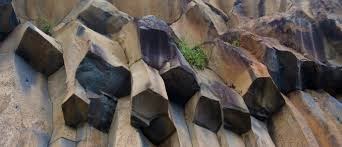
EARTHCACHE
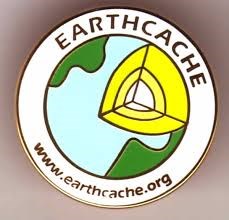
PORTUGUÊS

A Lomba da Pedreira no Nordeste
A Lomba da Pedreira (Nordeste) é uma freguesia do concelho do Nordeste na ilha de São Miguel. Esta aldeia localiza-se a elevada altitude nos confins da ilha de São Miguel entre a localidade Lomba do Moio e Água Retorta. Encontra-se rodeada de pastagens e tem como principal atividade económica a agricultura. Como nesta zona existia pedra de qualidade, os habitantes desta localidade exploraram uma Pedreira, de onde advém o nome de Lomba da Pedreira do Nordeste.
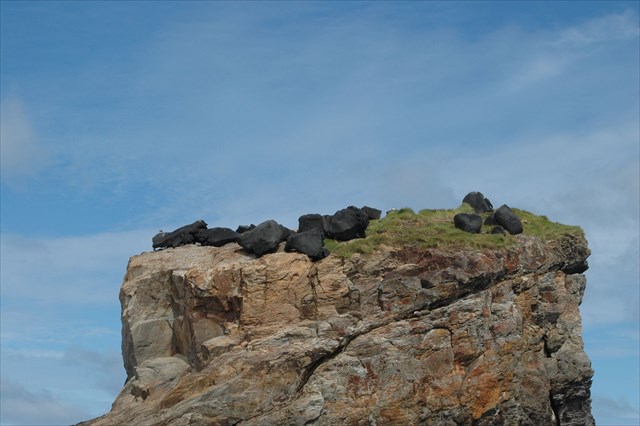
(disjunção esferoidal visível no Ilhéu das Apoitas, na ilha das Flores)
VÁRIOS TIPOS DE DISJUNÇÃO


Existem dois tipos” de disjunção: a prismática e a esferoidal!
A lava depois de arrefecer à superfície e ao sofrer a ação dos agentes de geodinâmica externa, pode sofrer um tipo de erosão que origina uma espécie de esferas concêntricas com camadas que se apresentam cada vez menos alteradas para o interior e um núcleo bem conservado. A rocha original entre estas esferas apresenta-se por norma também muito alterada quimicamente e desagregada fisicamente, ou seja, apodrecida.
Existe uma outra forma de disjunção em lava designada por disjunção prismática, muitas vezes desenvolvida em rochas ácidas, embora também surja em lavas básicas. Podem ver exemplares magníficos deste outro tipo de disjunção na ilha de Santa Maria e o caso mais famoso mundialmente é a Calçada de Gigantes ou Giant Causeway na Irlanda do Norte, mas este fenómeno também existe, um pouco por todas as ilhas dos Açores, sendo os mais conhecidos: a Rocha dos Bordões (a habitual e a submarina…) na ilha das Flores, a ribeira da Malbusca (na ilha de Santa Maria) e na Baía das Águalva (na ilha Terceira),…
Disjunção prismática
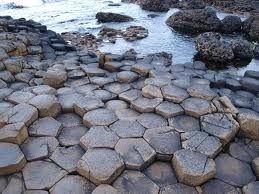
Disjunção prismática ou disjunção colunar é um processo geológico atetônico que dá-se quando ao arrefecer de alta temperatura o basalto sofre tensão por contração e fragmenta-se em colunas com forma de prisma, geralmente em sentido perpendicular a superfície. Por ocorrer geralmente na superfície o padrão geométrico tem aspeto peculiar de calçamento. Ocorre geralmente em materiais de origem ígnea, sills, diques de rochas básicas ou intermediárias.
Disjunção esferoidal
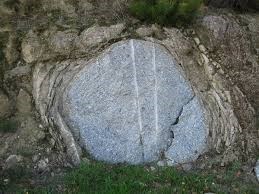
Divisão das rochas em corpos geométricos mais ou menos esferoidais em consequência de fenómenos de consolidação magmática, de meteorização, etc.
A disjunção esferoidal, também designada disjunção em bolas, é frequente nas rochas magmáticas básicas, como doleritos e gabros, mas encontra-se, também, em dioritos, granodioritos e granitos.
EXFOLIAÇÃO E DISJUNÇÃO ESFEROIDAL
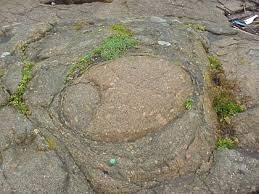
Duas formas de fragmentação rochosa não relacionadas diretamente a fracturas preexistentes são a exfoliação e a disjunção esferoidal. A exfoliação é um processo de meteorização física pelo qual placas grandes e achatadas ou curvas de rocha são fraturadas e destacadas de um afloramento. A disjunção esferoidal consiste, também, na fragmentação e separação de camadas curvas de um bloco geralmente esférico mas, usualmente, numa escala muito menor. O seu mecanismo permanece desconhecido mas pode resultar de fendas paralelas à superfície do afloramento causadas por alteração química ou da distribuição diferencial de meteorização química e mudanças de temperatura.
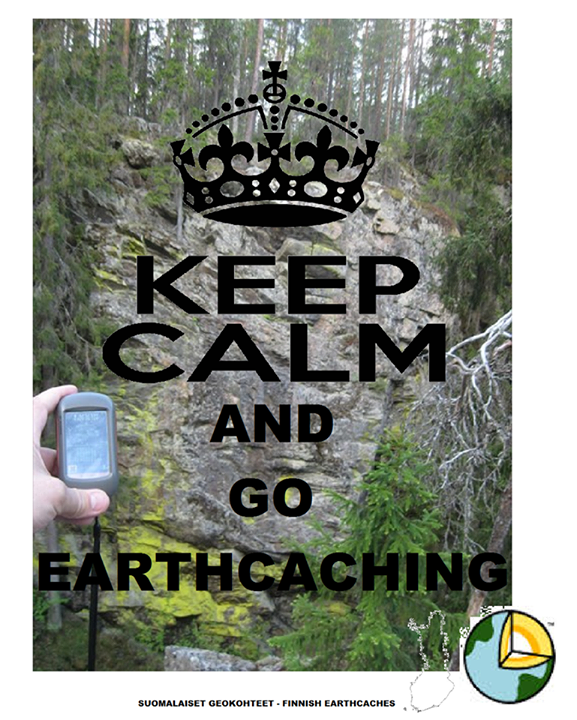
PARA REALIZAR E REGISTAR ESTA EARTHCACHE:
PERGUNTAS:
Para “encontrar/registar” esta cache deverá: provar que esteve no local e responder às seguintes questões, enviando um email/mensagem de Geocaching, com as respostas, em português ou em inglês, para o nosso perfil.
Só depois, de enviar as respostas, e conforme as “guidelines” para as Earthcaches, deverá efetuar o seu registo!
Serão removidos todos os registos que não obedeçam a estes requisitos.
1. A partir da descrição desta earthcache, responde às questões:
a) Qual a diferença disjunção prismática e disjunção esferoidal?
b) Identifica um local dos Açores onde existe disjunção prismática.
c) Identifica outro local dos Açores onde existe disjunção esferoidal.
2. Na zona do GZ, existe um “tipo” de disjunção.
Observando a zona do GZ responde às seguintes questões:
a) Identifica o tipo de disjunção existente no GZ
b) Estima a área da “pedra” relativa a esta disjunção.
c) À volta desta pedra e do lado esquerdo, existe outro fenómeno geológico. Identifica-o.
d) Identifica o tipo de rocha presente neste local.
3.
TAREFA OBRIGATÓRIA:Deverá tirar uma foto sua, onde você apareça (ou com um papel/placa onde conste o seu nickname e a data da visita) e que comprove a sua presença no GZ desta EC - NÃO METASPOILERS. Esta foto deverá ser colocada no seu registo ou enviada por email ou sistema de mensagens de Geocaching, para o owner!
Não responderemos ao seu contato, a não ser que haja algum “problema” com as suas respostas ou registo.

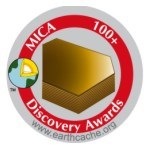


Esta earthache foi produzida durante o “AÇORES GeoEarth 2015”
e é a primeira earthcache do Concelho do Nordeste!
AGRADECIMENTOS:
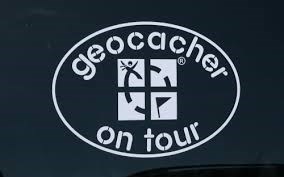
Agradecemos a especial colaboração do amigo geocacher Daniel Oliveira, bem como do
Professor Doutor Victor-Hugo Forjaz - Vulcanólogo de Engenharia, Jubilado
e do Observatório Vulcanológico e Geotérmico dos Açores (OGVA).

“A PEDREIRA DO NORDESTE”
THE QUARRY NORTHEAST
[S. Miguel - Azores]
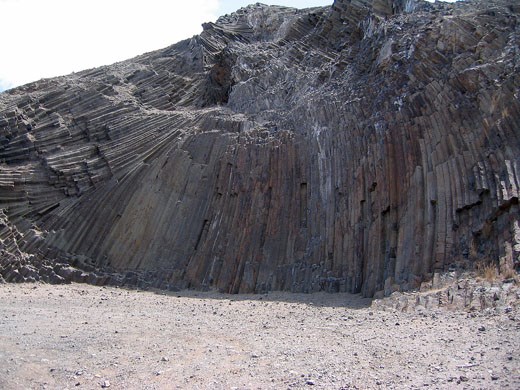
ENGLISH

“Lomba da Pedreira“ in the Northeast
The “Lomba da Pedreira” (Northeast) is a parish in the northeastern municipality on the island of São Miguel. This village is located at a high altitude in the confines of the island of São Miguel between "Lomba do Moio" and "Água Retorta". It is surrounded by pastures and its main economic activity is agriculture. As this area possessed quality stone, the inhabitants of this locality exploited a quarry, from which comes the name of Lomba da Pedreira do Nordeste.
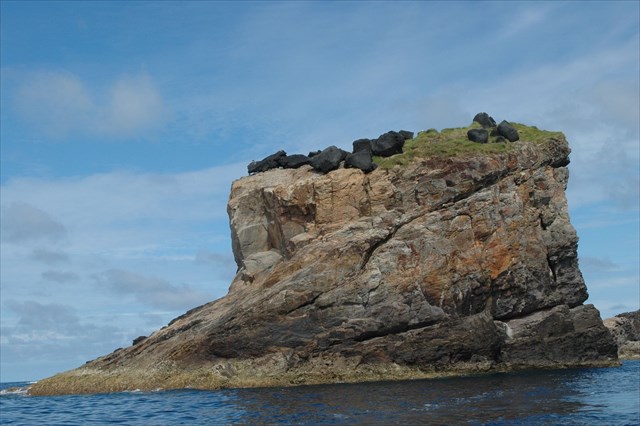
( spheroidal cutvisible in the islet of Apoitas, on Flores)
VARIOUS TYPES OF DISJUNCTION
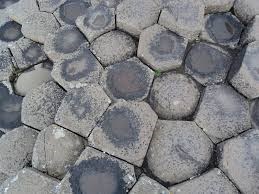
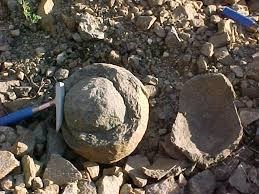
There are two types "of disjunction: the prismatic and the spheroidal.
The Lava after cooling to the surface and undergoing the action of external geodynamic agents , can undergo a type of erosion that causes a sort of concentric spheres with layers that have fewer changed to the interior and well preserved nuclei. The bulk rock between these spheres presents very generally also chemically altered and physically broken down, or rotten.
There is another way of disjunction of Lava designated prismatic disjunction, often developed at acidic rocks, although it also appears in basic lava. You can see magnificent examples of this other kind of disjunction on the island of Santa Maria and the most famous case is the world Causeway Giants in Northern Ireland, but this phenomenon also exists, a bit throughout the islands of the Azores, and the usual: the "Rocha dos Bordões" (the usual and underwater ...) on the island of Flores, the stream of “Malbusca” (on the island of Santa Maria) and onTerceira Island, at “Baía da Agualva”,…
PrismaticDisjunction
Prismatic or columnar disjunction is a "atetônico" geological process where when the high temperature cooling basalt undergoes contraction for tension and fragments in a column-shaped prism, generally perpendicular to the surface. By generally occuring on the surface this geometric pattern has peculiar aspect of pavement. Usually it occurs in igneous materials, sills, basic or intermediate rocks dikes.
SpheroidalDisjunction
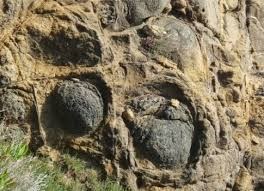
The division of rocks in a more or less spheroidal geometrical bodies as a result of igneous phenomena and consolidation of weathering, etc.
The spheroidal disjunction, also called disjunction in balls, is common in basic magmatic rocks such as dolerite and gabbro, but is also in diorite, granodiorite and granite.
EXFOLIATION ANDSPHEROIDALDISJUNCTION
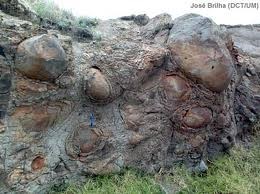
Two forms of rock fragmentation which are not directly related to pre-existing fractures are the exfoliation and the spheroidal disjunction. Exfoliation is the process by which physical weathering and large flat plates or curved rock is fractured and detached from an outcrop. The spheroidal disjunction is also the fragmentation and separation of layers curves of a generally spherical block but usually on a much smaller scale. Its mechanism remains unknown but may result in cracks parallel to the surface of the outcrop or chemical change caused by the chemical weathering differential distribution and temperature changes.

TO PERFORM AND LOG THIS EarthCache:
QUESTIONS:
To "find / register" this cache must: prove that visited the site and answer the following questions by sending an email / message Geocaching, with answers (in Portuguese or in English, only) to our profile.
Only later, sending the answers, and as the "guidelines" for EarthCaches should make your registration! They will be removed from all records that do not meet these requirements.
1. From the description of this EarthCache, answer the questions:
a) What is the difference between prismaticand spheroidaldisjunctions?
b) Identify one place from the Azores where there is prismatic disjunction.
c) Identify another location of the Azores where there spheroidal disjunction.
2. In the area of the GZ, there is a "type" of disjunction.
Observing the area of GZ answer the following questions:
a) Identify the type of existing disjunction in GZ
b) Estimate the area of the "rock" on this disjunction.
c) Around this stone and to the left side, there is another geological phenomenon. Identifie it.
d) Identify the type of rock at this location.
3.
TASK (not optional): You must take a picture of yourself, where do you show up, (or with a paper / plaque with your geocaching nickname and the date of the visit) and that proves your presence in the GZ of this EC - no spoilers please. This photo must be placed in your log or sent by email or Geocaching messaging system, to the owner!
We do not respond to your touch, unless there is a "problem" with their answers or register.




This earthache was produced during the Azores GeoEarth 2015.
THANKS:
We appreciate the special collaboration of the geocacher friend Daniel Oliveira and the
Professor Victor-Hugo Forjaz - volcanologist Engineering, Emeritus
and the Volcanological and Geothermal Observatory of the Azores (OGVA).
